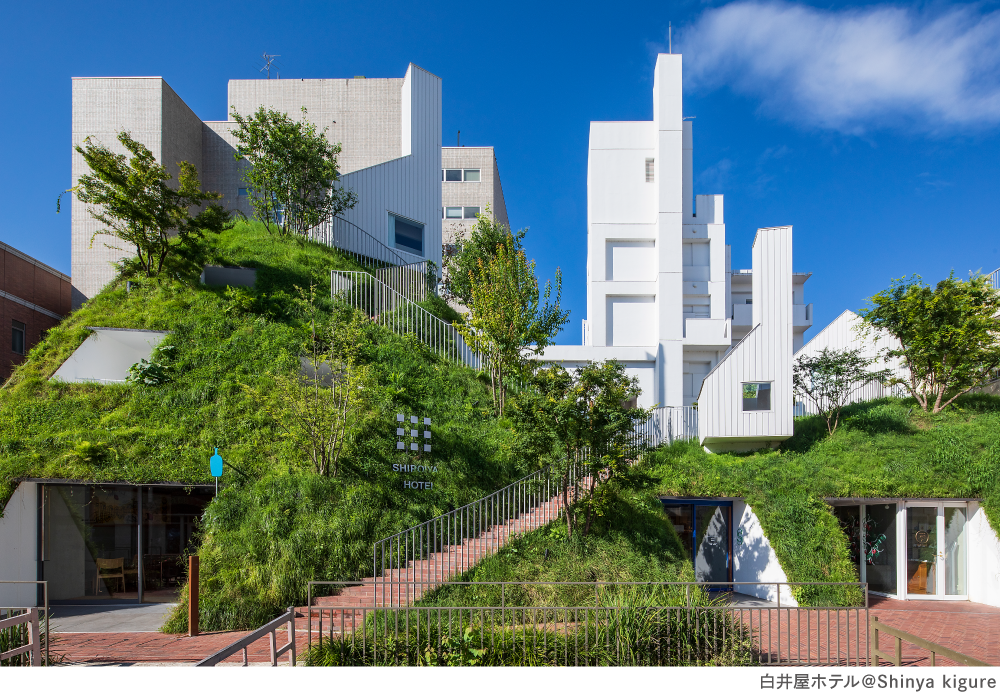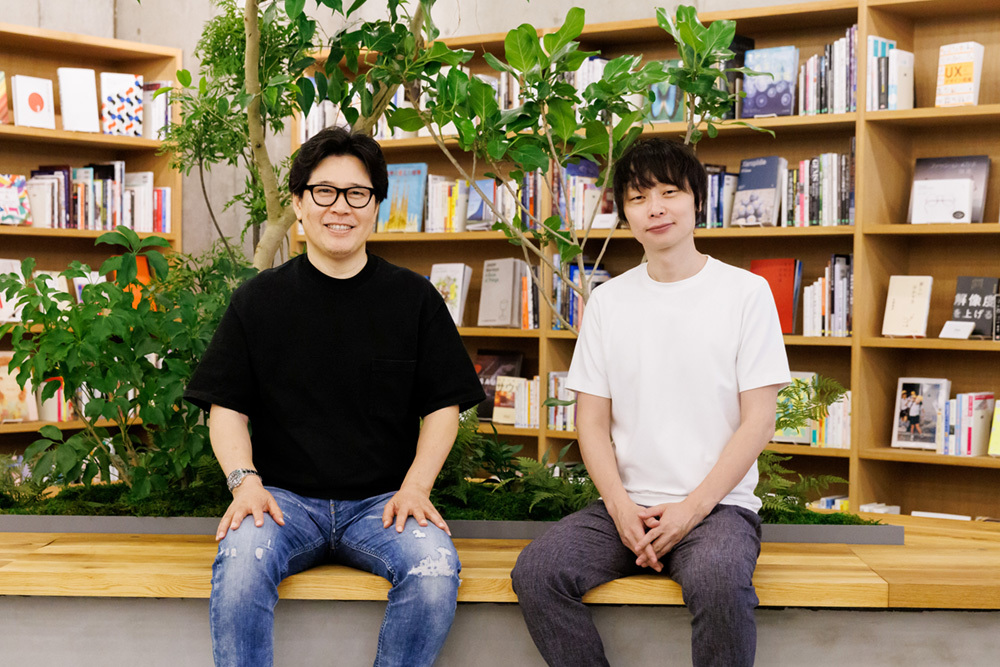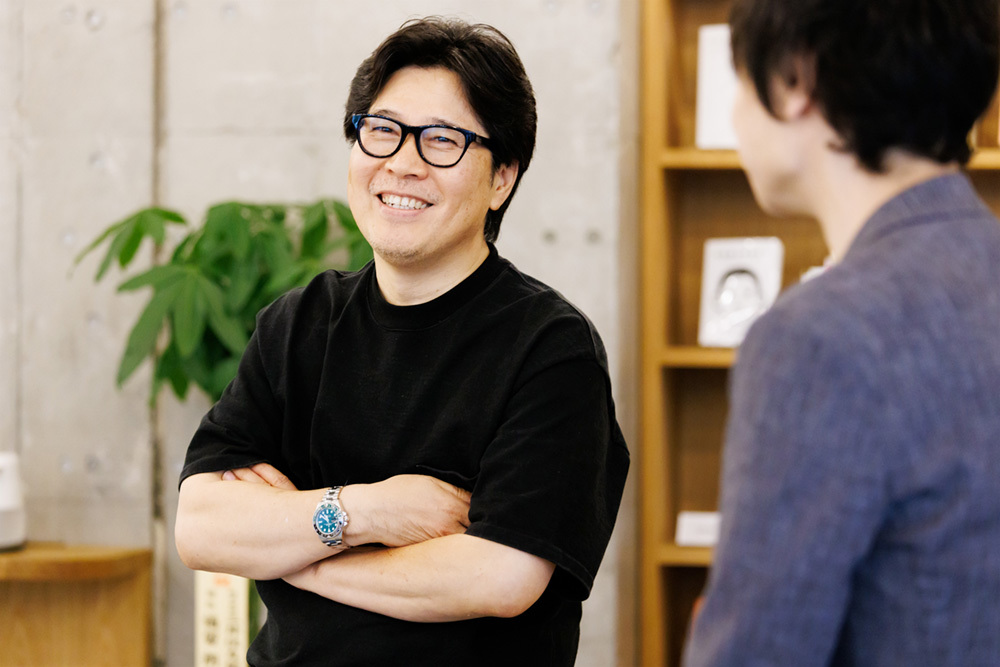Dentsu Inc.'s 'Urban Future Design Unit' is a specialized team that envisions the future of cities and lifestyles, providing support across various fields from conception to realization ( details here ).
This series has explored, from various angles, what is required for future urban and community development, as well as what makes cities with high levels of happiness.
This time, Shingo Yamahara from the Urban Future Design Unit interviewed Mr. Hitoshi Tanaka, Representative Director and CEO of JINS Holdings, who is passionately dedicated to revitalizing Maebashi City, Gunma Prefecture, and actively involved in community activities. While answering questions like "What is necessary to create a truly unique city?" and "What kind of city has a high level of happiness?", he shared his thoughts on the future of city development.
Focusing on creating unique value gives birth to one-of-a-kind towns
Yamahara: The town revitalization projects spearheaded by President Tanaka, such as formulating town development visions and launching the "Shiraiya Hotel" and "Maebashi Galleria," are drawing significant attention. First, could you tell us what prompted you to get involved in Maebashi's town development?
Tanaka: Initially, it wasn't so much about town development as wondering what I could contribute to my hometown of Maebashi as an entrepreneur. In 2013, I launched the "Gunma Innovation Award" entrepreneur discovery project, followed the next year by the "Gunma Innovation School" to nurture entrepreneurs. Through these activities, I gradually had more opportunities to talk with local people, which led to my involvement in town development.
At that time, Maebashi's central shopping district had fallen into such a state of decline that it was featured in textbooks as a prime example of a shuttered shopping street nationwide. Hearing the voices of local residents who felt "we must do something about this" and "we want to bring back the vibrancy," I decided to purchase the building of the defunct Shirai-ya Ryokan. Then, I launched a regeneration project, worked with the administration and citizens to formulate a vision for the town, and before I knew it, I was taking on more and more tasks. Overcoming various challenges and difficulties, I became increasingly absorbed in community development.

The Shirai-ya Ryokan, which closed in 2008 and faced demolition, underwent renovation and new construction through a revitalization project by the Tanaka Jin Foundation. It was reborn as the Shirai-ya Hotel in 2020. The renovation and new building design were handled by Sou Fujimoto. Works by artists and creators from Japan and abroad are displayed throughout, making it a talked-about art hotel.

Maebashi Galleria, designed by Akihisa Hirata as a new mixed-use facility blending residences and art, opened in May 2023. It houses galleries and restaurants representing Japan's contemporary art scene, with condominiums on the upper floors. It is gaining attention as a new art spot in Maebashi.
Yamahara: The Shirai-ya Hotel, which opened in 2020, became a hot topic as a completely new art hotel and landscape. With the hotel's arrival, I feel the atmosphere of Maebashi city and the flow of people have changed significantly. What do you value most in your approach to town development, President Tanaka?
Tanaka: Actually, business and town development are very similar. In business, simply copying others rarely leads to success. For town development too, I believe it's crucial to create a truly unique town. For example, if you aim to replicate Tokyo by bringing the same restaurants and facilities found there to a regional city, it's just an imitation of Tokyo. To put it bluntly, it becomes a lesser version of Tokyo. The crucial thing is to create a unique value for that town – something neither Tokyo nor other regions possess.
Yamahara: You've long stated your desire to make "Digital," "Art," "Design," and "Food" the pillars of Maebashi's city. Now, Maebashi is indeed undergoing a significant transformation into such a unique city.
Tanaka: That's right. The opening of the Shiraiya Hotel provided a visible success story, and that instantly shifted the momentum. More people are getting involved in town development and community activities, and I truly feel the city is coming back to life.
When you look at Tokyo and various regional cities, most towns are born from math. How much to invest, how much for rent and depreciation, how much profit will be made... I believe the reason so many similar towns have sprung up across Japan today is because they are built based on this calculation.
Yamahara: That's exactly what's happening in many regions right now.
Tanaka: Exactly. That's precisely why, instead of starting town development with math, we focus first on creating that town's unique value. Only then do we consider the math later. This is the approach taken by the Shirai-ya Hotel and in Maebashi's town development.
Yamahara: In that sense, Maebashi is attracting attention as a truly unique city.
What's crucial is creating a vision that leverages the city's DNA and its distinctive character.
Yamahara: When speaking with those involved in town development and urban projects, I often sense many are struggling with how to discover a region's uniqueness and value to create a truly distinctive town. What is the first essential step in creating a one-of-a-kind town?
Tanaka: You need a vision that defines the city's "essence." In Maebashi's case, the word "Mebuku." emerged as the vision guiding the city's development direction. It seems abstract at first glance, right? But delving into Maebashi's history reveals it once flourished as a silk-producing town. In the early Meiji period, 25 influential local entrepreneurs known as the "Maebashi Twenty-Five" contributed significantly to the city's growth.
This concept of "mebuku" strongly connects to Maebashi's current situation: it possesses the fertile ground that nurtured such entrepreneurs and is now being revitalized as a city where "good things grow," breathing new life into itself. Today, the term is so integral that it's used in various names shaping the city, like "mebuku ID" and "mebuku Ground Co., Ltd."
Yamahara: The term "mebuku," born as part of the Maebashi Vision, may have started as just a word. However, from there, talent began to sprout through initiatives like the Innovation School, new spaces began to sprout in the city, and new businesses began to sprout. As various community development activities accumulated, I feel this "mebuku" began to take on a deep, powerful meaning.
Tanaka: That's absolutely right. "Mebuku." has steadily become a truly powerful word, filled with substance. I think many people genuinely feel that too. And now, "Mebuku." is starting to become Maebashi's new DNA.
The key is to first look back at the area's history and uncover what kind of town it is. If we can find that town's DNA, a vision that feels "true to the town" will naturally emerge, won't it?
Yamahara: Both DNA and vision are crucial in town development.
Tanaka: In Maebashi, we often use brick symbolically, drawing on the legacy of the raw silk industry. While a city's history can be traced back endlessly, I believe its strongest asset is the era when it shone brightest. For Maebashi, that was the era when the raw silk industry flourished – that defined Maebashi's "essence."
Resident participation enhances a city's happiness
Yamahara: In recent years, the term "well-being" has become established, and urban development actively pursuing the well-being and livability of residents and workers is being pursued. Within this, a frequently discussed theme is "What makes a city with high happiness?" President Tanaka, what do you think is essential for increasing a city's happiness?
Tanaka: There are well-being indicators that measure residents' happiness from various perspectives like welfare, education, transportation, and administration. While these are certainly valid, what I've come to feel is crucial through my actual involvement in community development and local activities is "residents' sense of participation." I believe the feeling of being involved (in something within that community) significantly impacts happiness.
Regarding Maebashi's community development, new movements are starting to emerge recently. For example, there's a case where about 50 local residents pooled their money to buy a struggling traditional restaurant and are now working to rebuild it. People who think, "We have to do something," and start taking action – while still a minority – are gradually increasing.
Yamahara: That's amazing. Inspired by President Tanaka's initiative, local residents have started taking action themselves.
Regarding that sense of participation, as those initiating community development, we try various approaches to involve locals and revitalize the area. But for the residents we're trying to engage, it's hard for them to feel personally invested, and participation doesn't increase easily.
Tanaka: Honestly, most people think it doesn't concern them. But there are definitely some who genuinely want to get involved, who want to participate, who want to make a difference in their town. So, I think it's best to start by igniting that spark in those people.
Yamahara: So you gradually draw more people in that way.
Tanaka: Once the town starts revitalizing, sparked by someone taking the lead, even the passive residents begin to rediscover their town's charm. I believe their awareness gradually shifts. If this loop forms and more residents start thinking, "I want to do something too," the town's overall happiness will naturally increase.
Yamahara: So the key is to first create that loop, transforming the town into something more appealing alongside residents' growing sense of participation. If more and more regions like this emerge, it might just change the very nature of Japanese towns.

Jin's Holdings CEO Hitoshi Tanaka (left) and Dentsu Inc. Shingo Yamahara














